Puppet-Making Workshop Sparks Imaginations in Students of All Ages
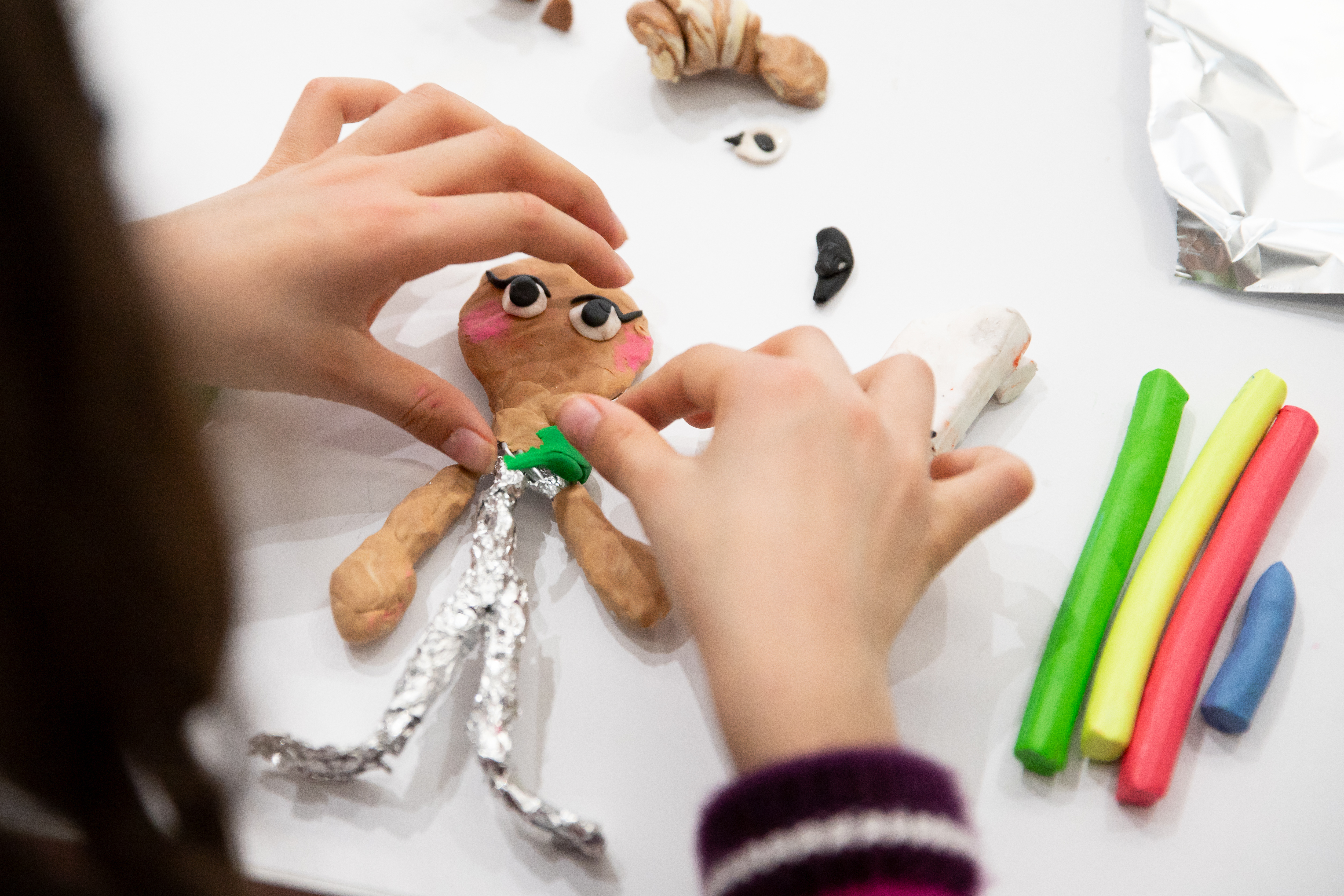
Posted on | Updated
Celebrated Indigenous artist and animation director Amanda Strong led students from ECU and Queen Alexandra Elementary in a hands-on seminar to develop characters for stop-motion animation.
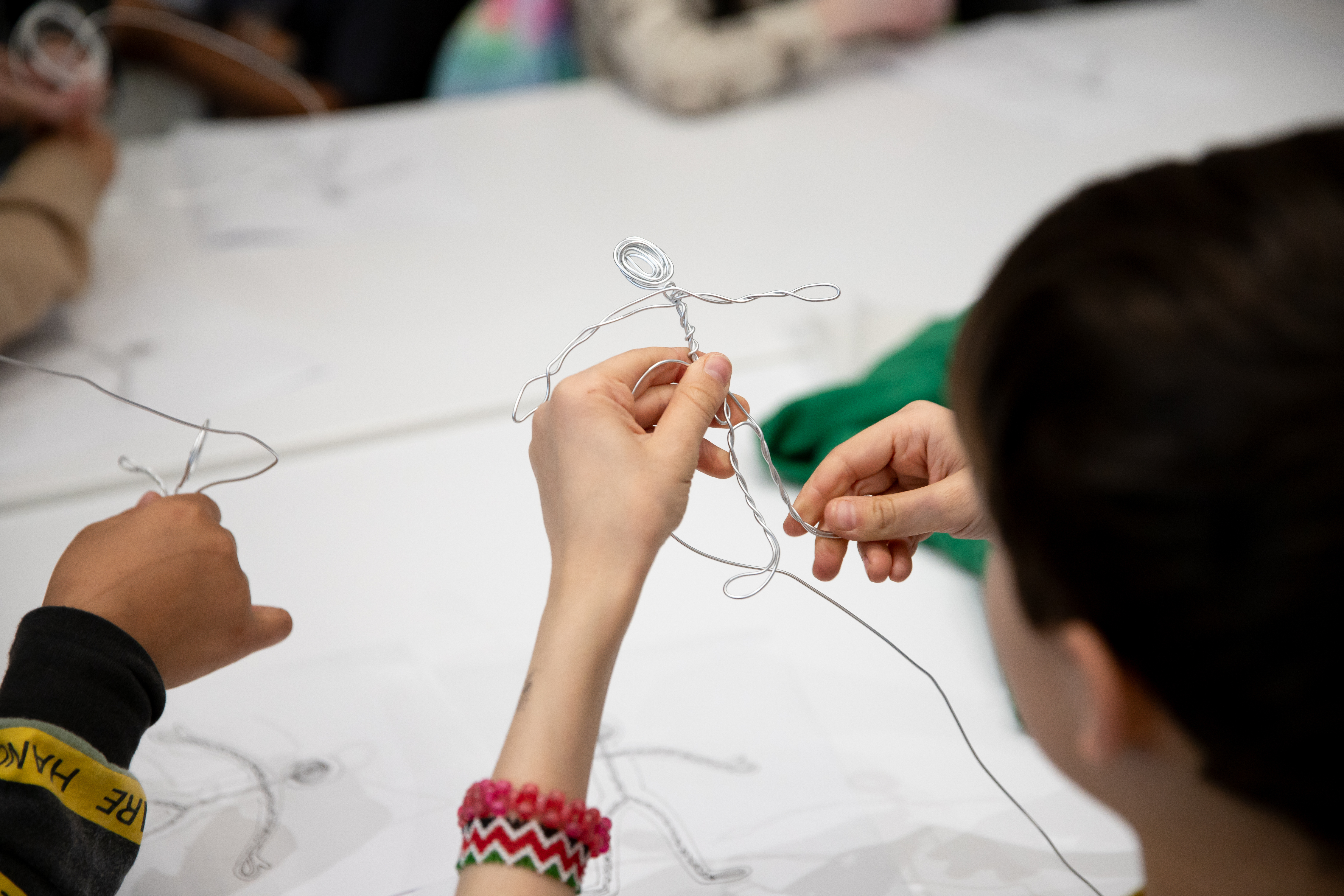
A student shapes their wire puppet
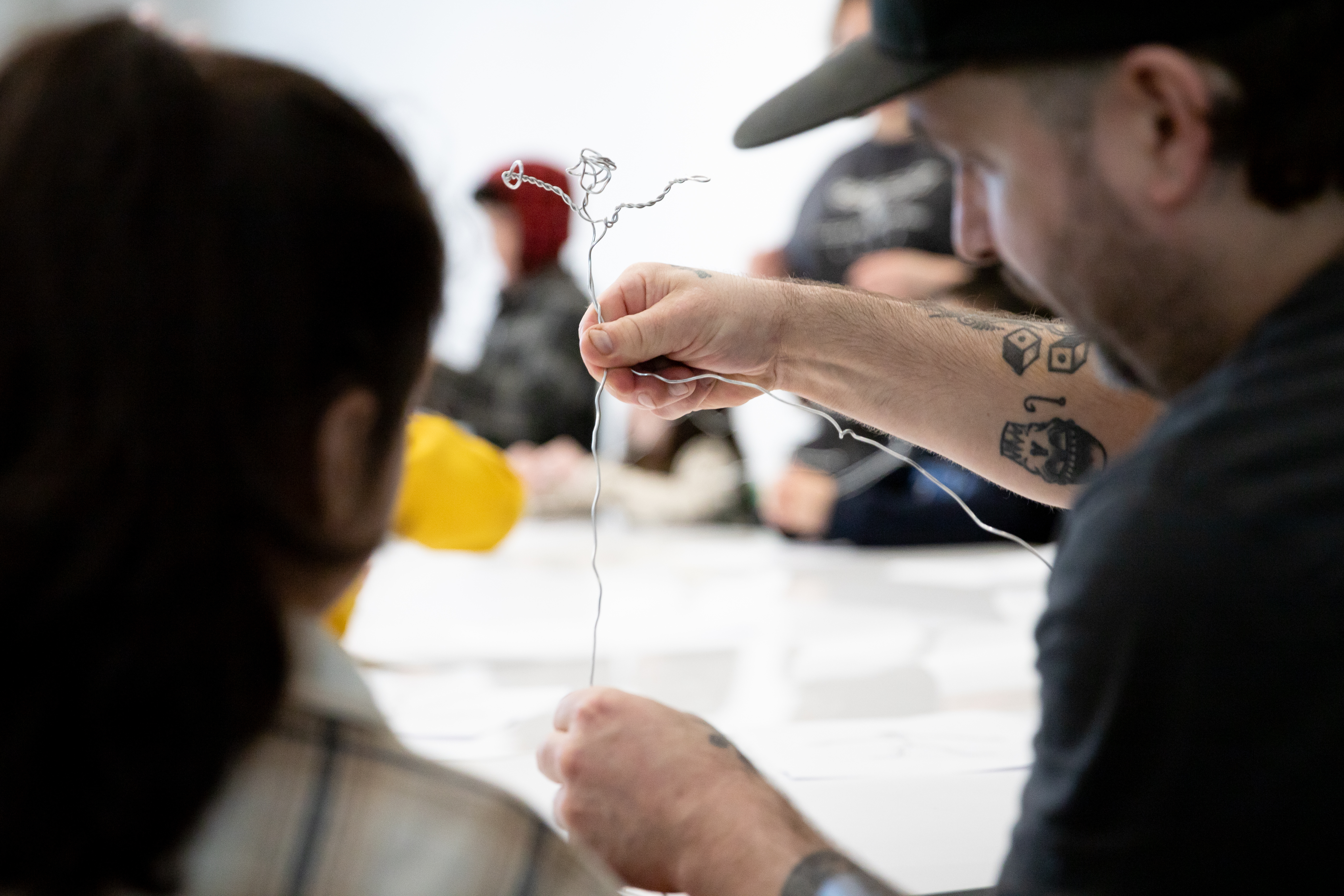
Animator Danny Guay shows a student how to manage the wires
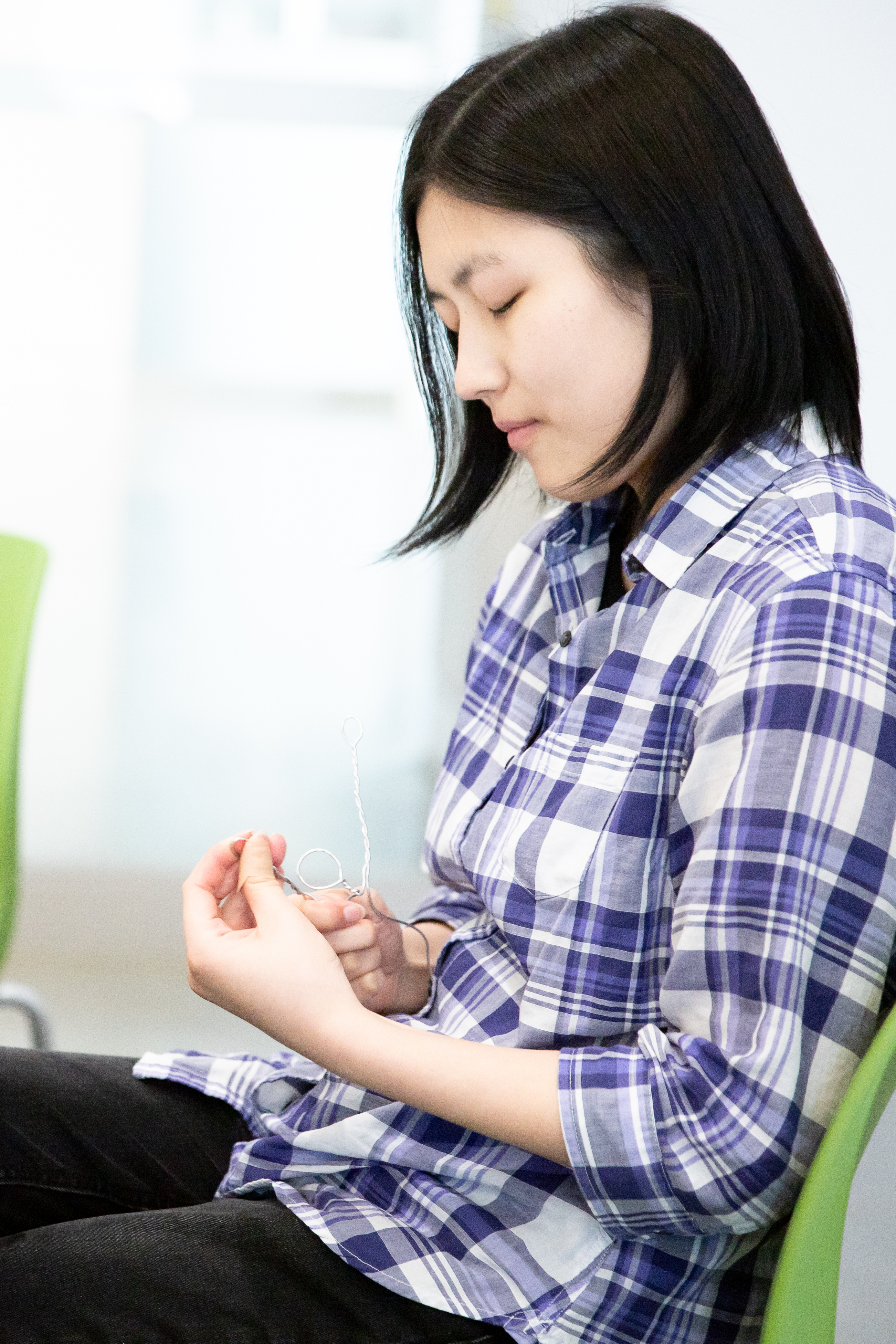
Hikari Shinagawa puts together their wire puppet
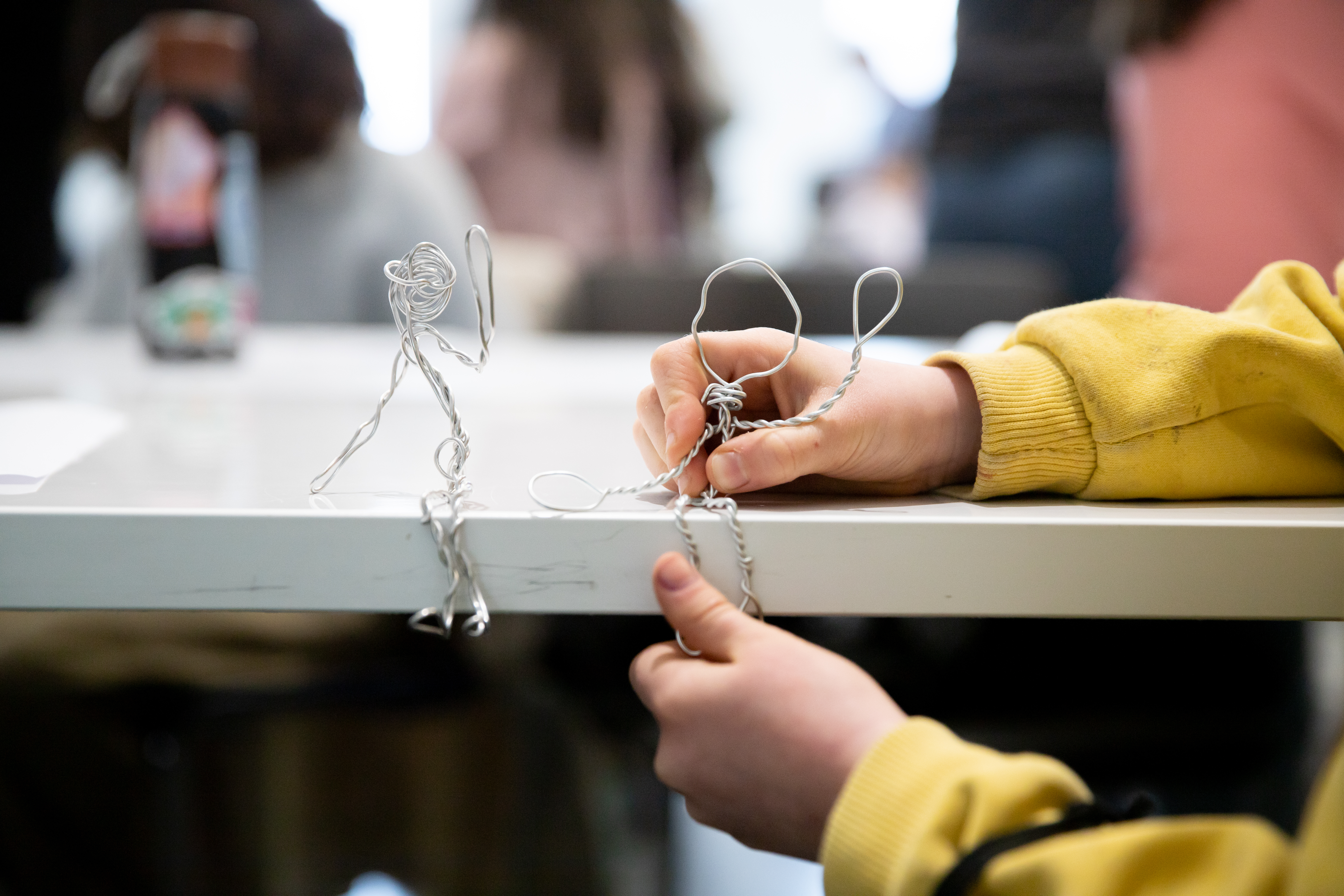
Students show off their wire puppets
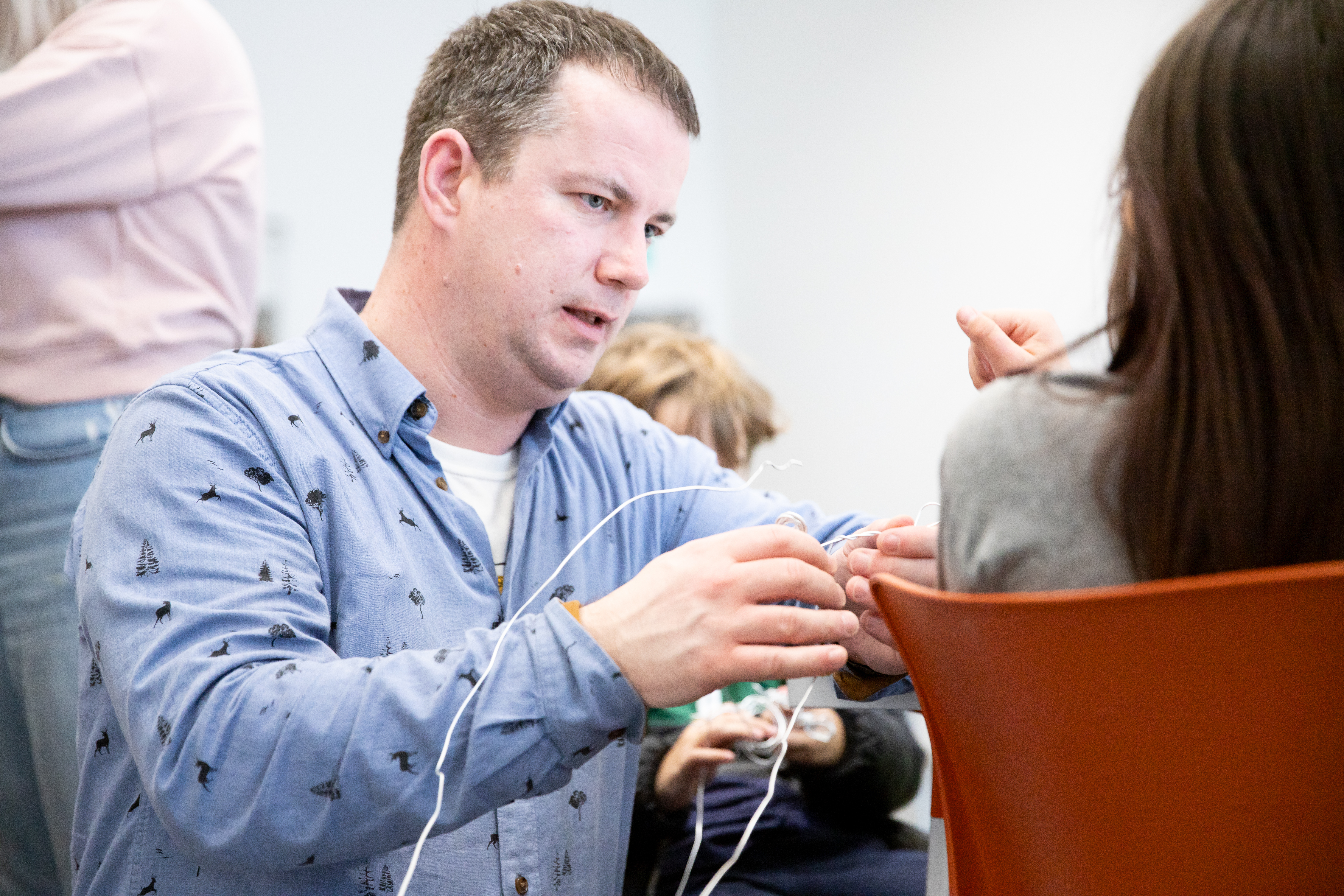
Principal Joe Maher talks to a student

A student adds foil to their wire puppet
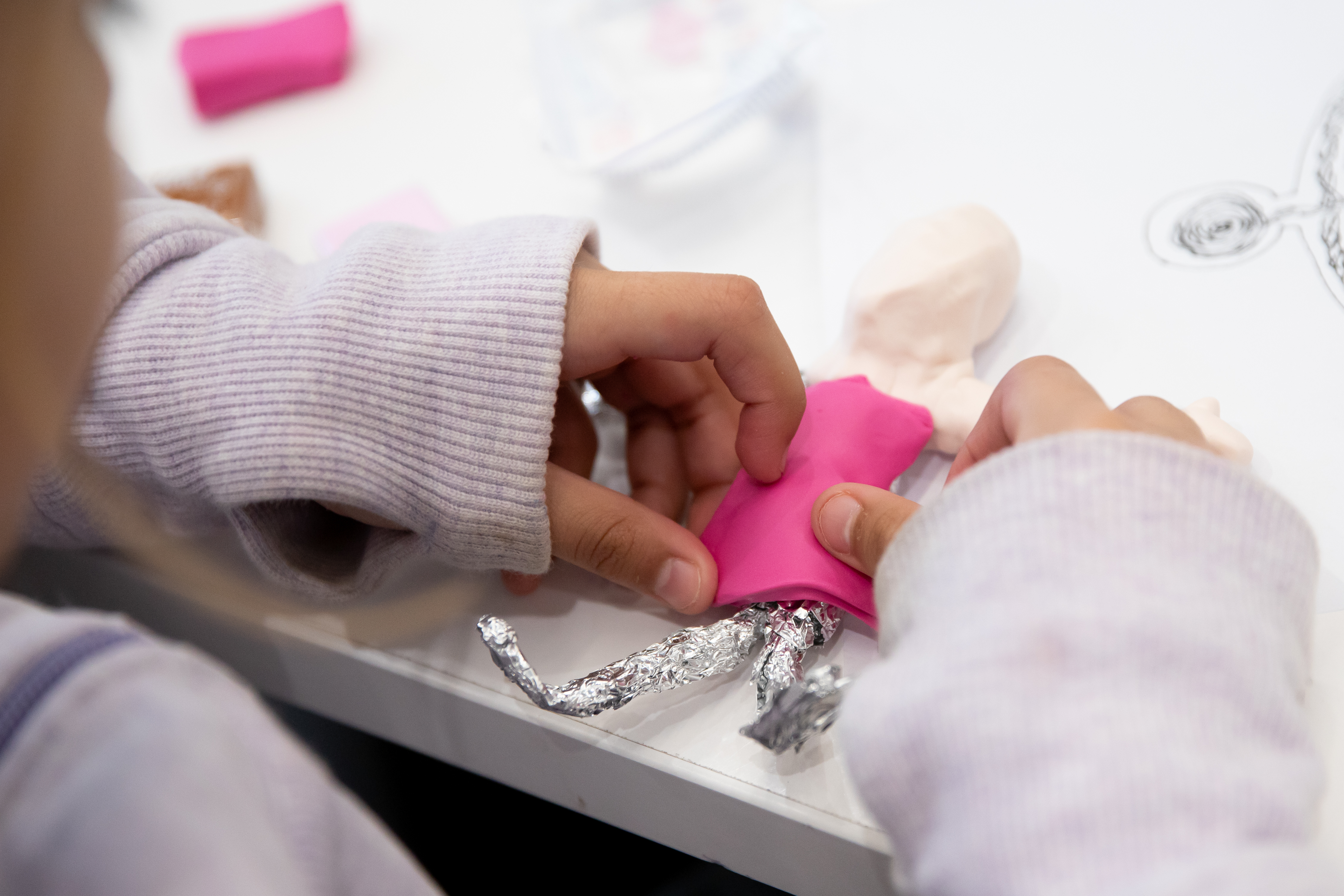
A student adds plasticine to their puppet
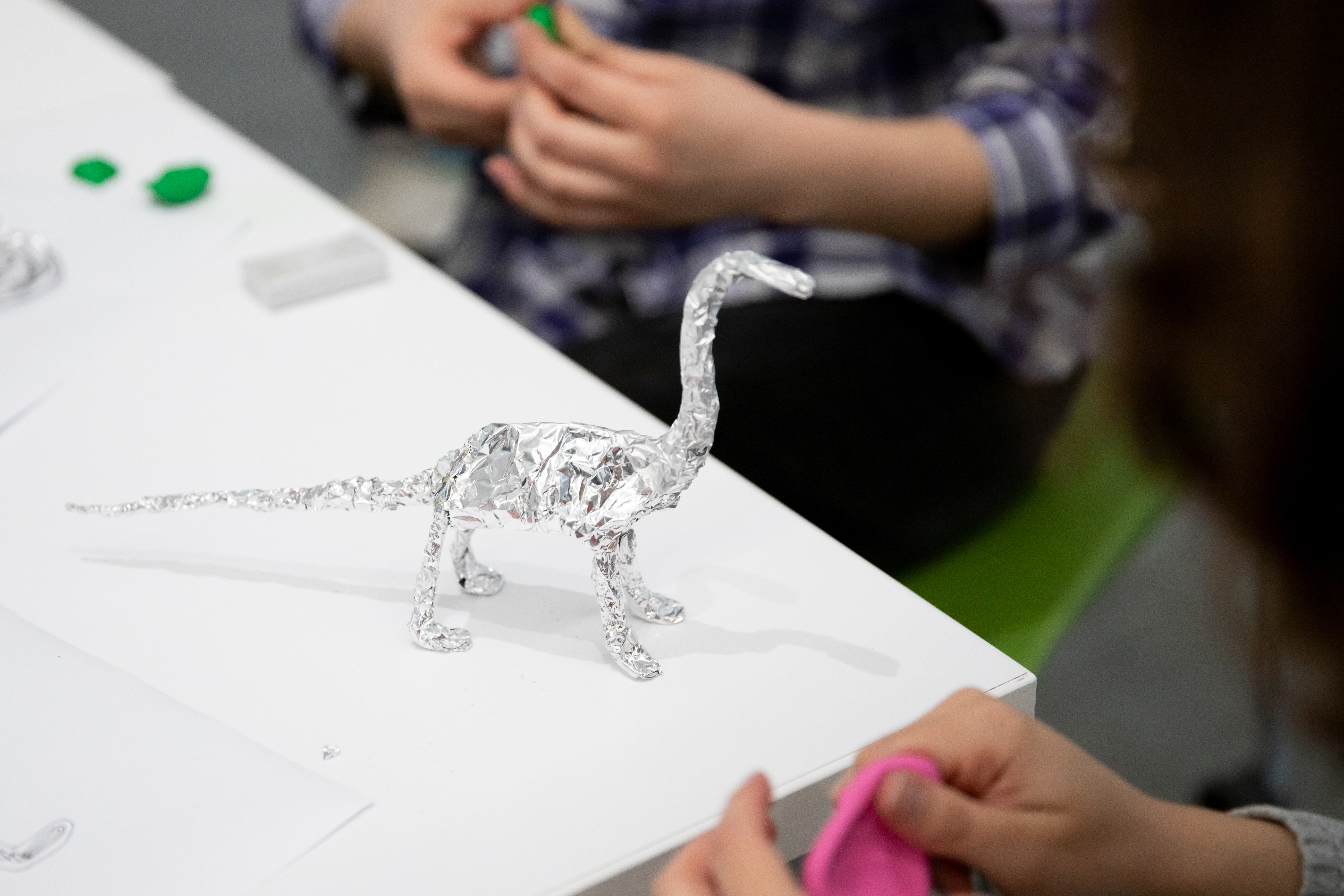
An ECU student's dinosaur puppet
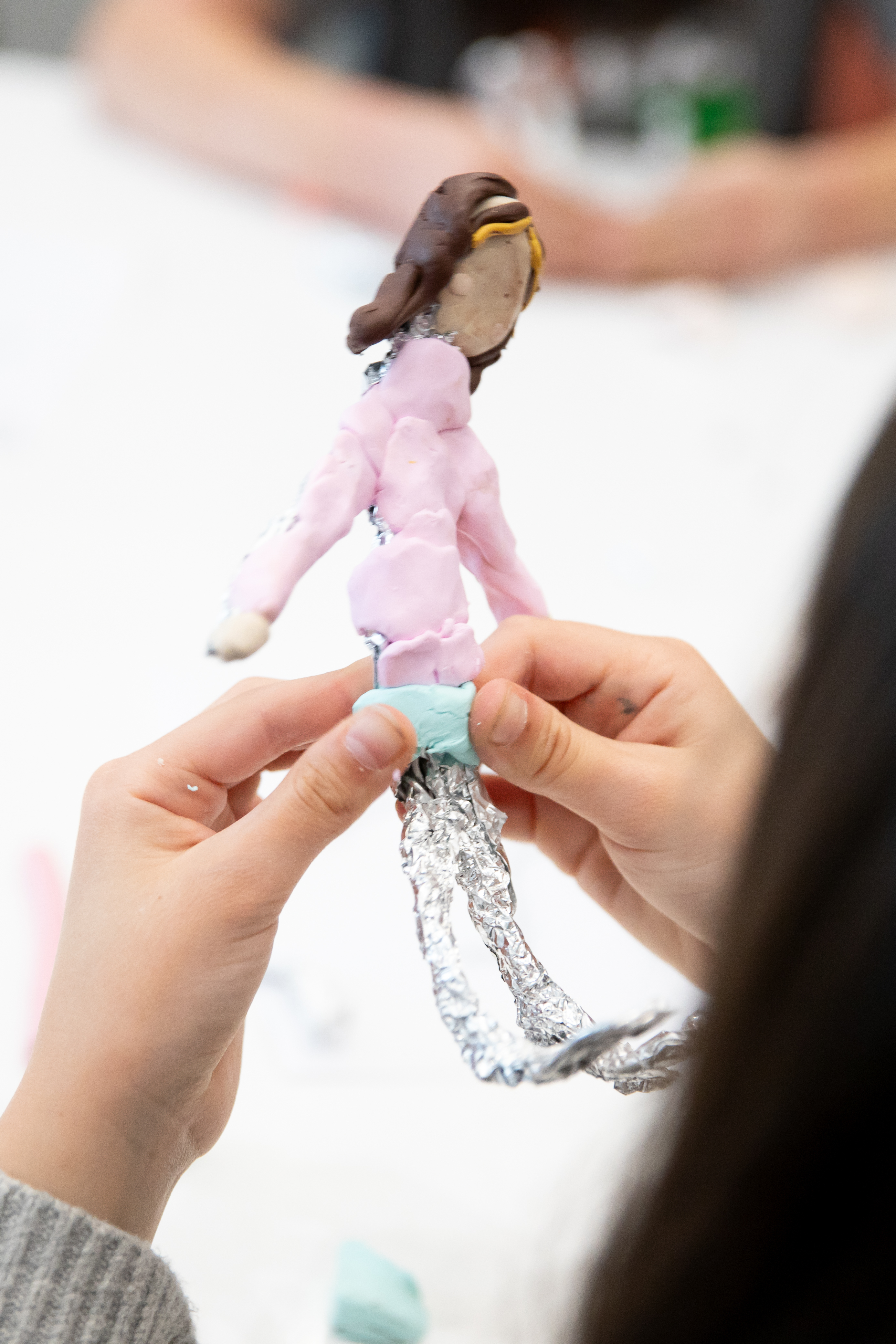
A student adding plasticine to their puppet
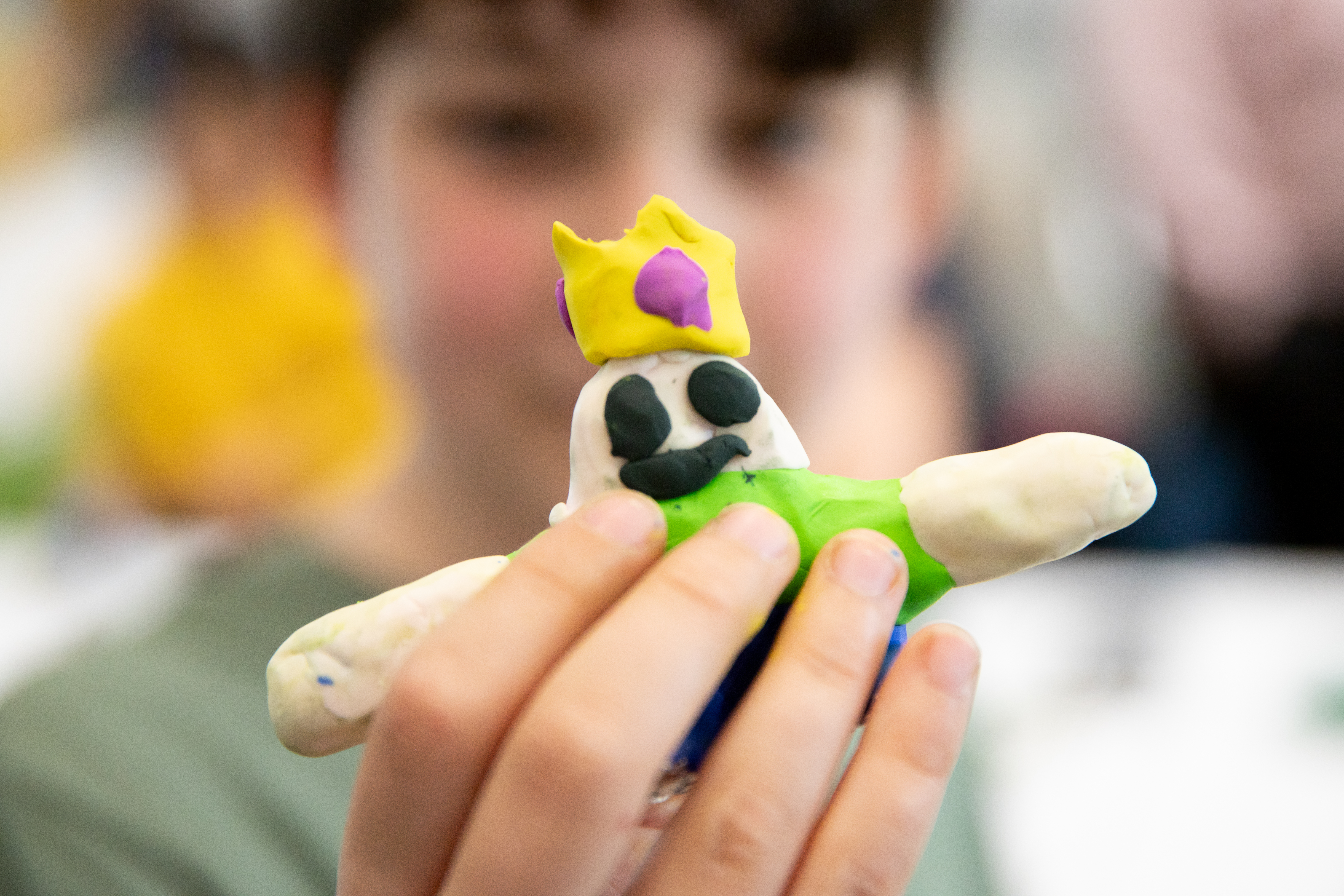
A student showing off their short king puppet
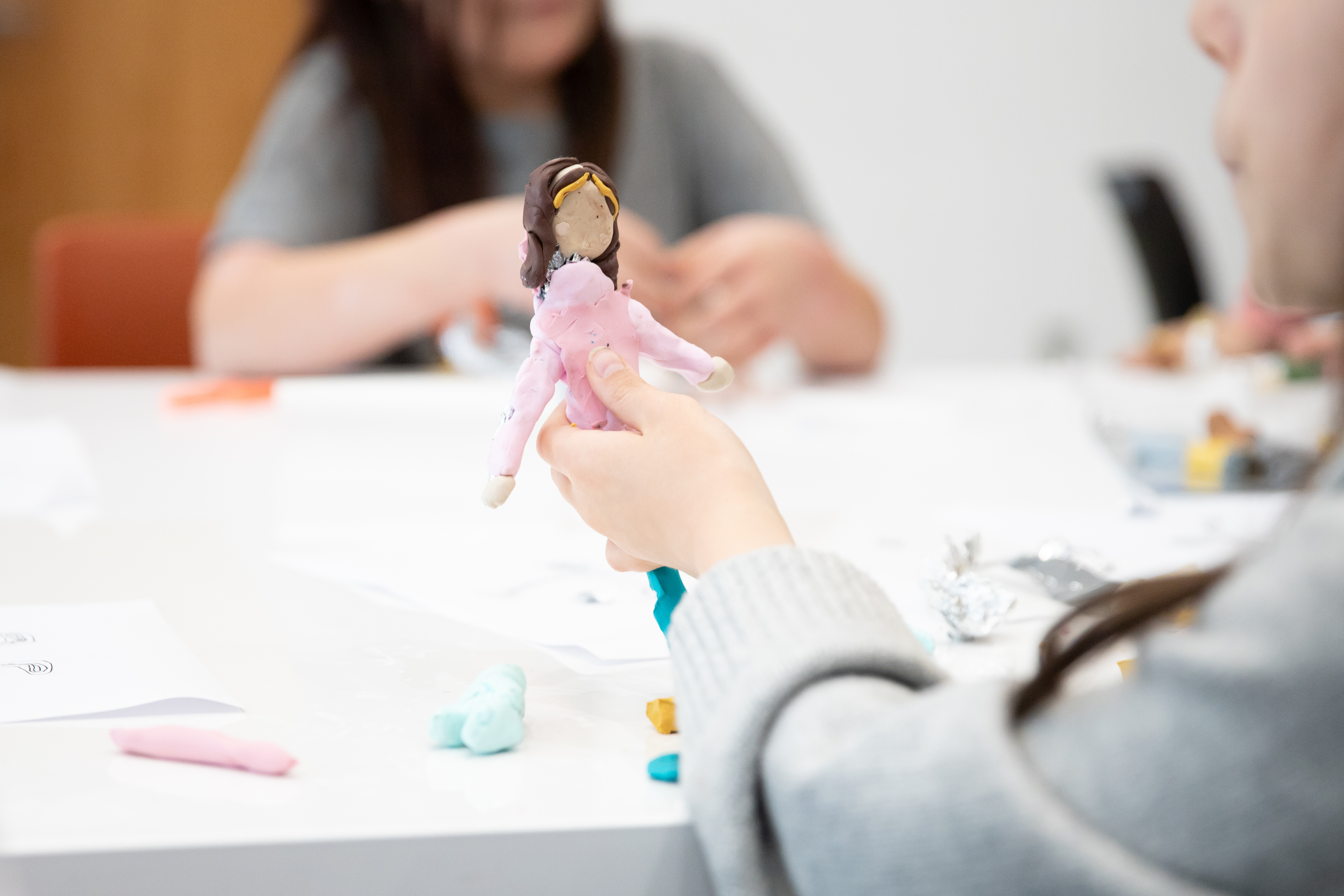
A student holds up a puppet who is a portrait of their friend
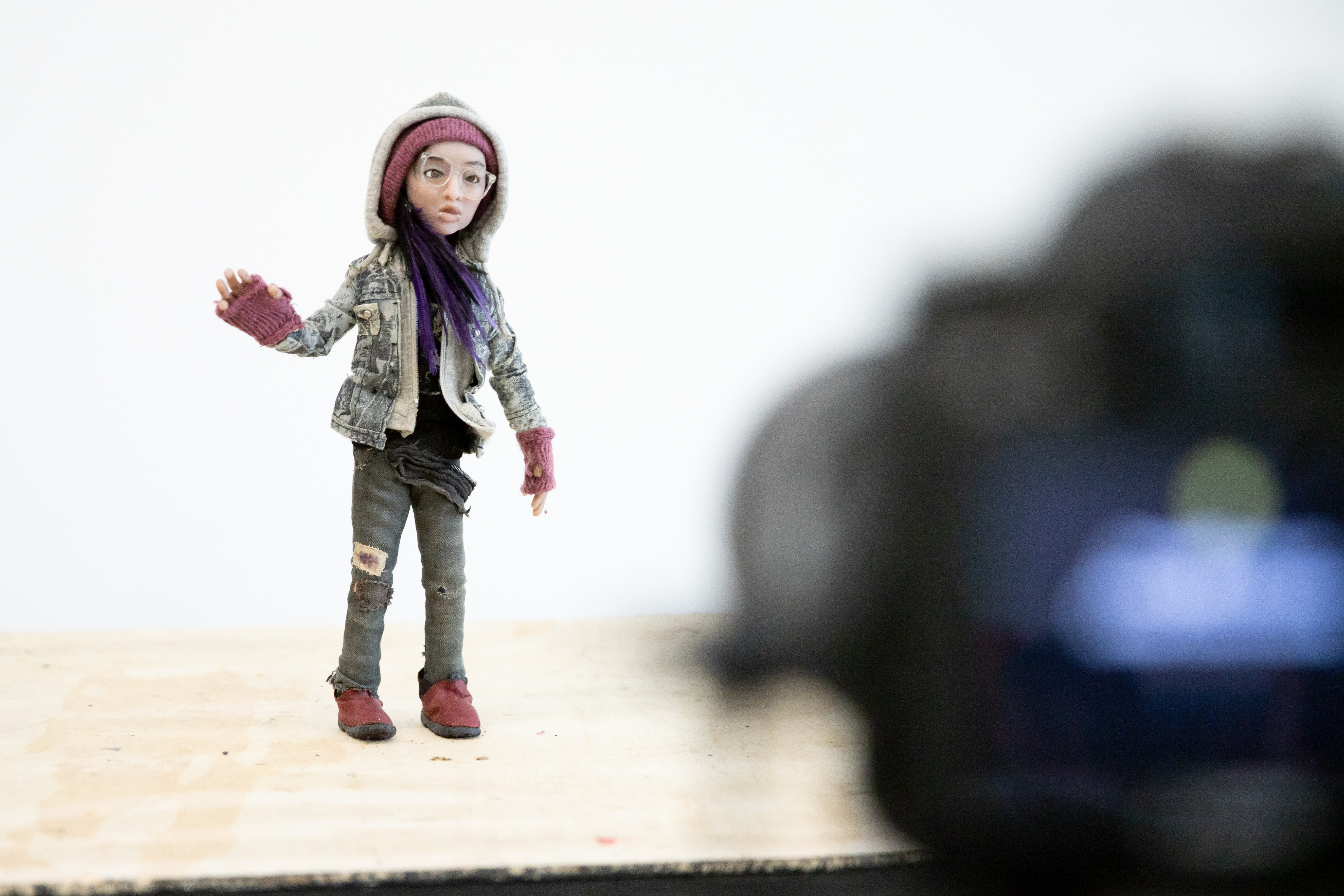
Animator Amanda Strong's puppet Biidaaban on display
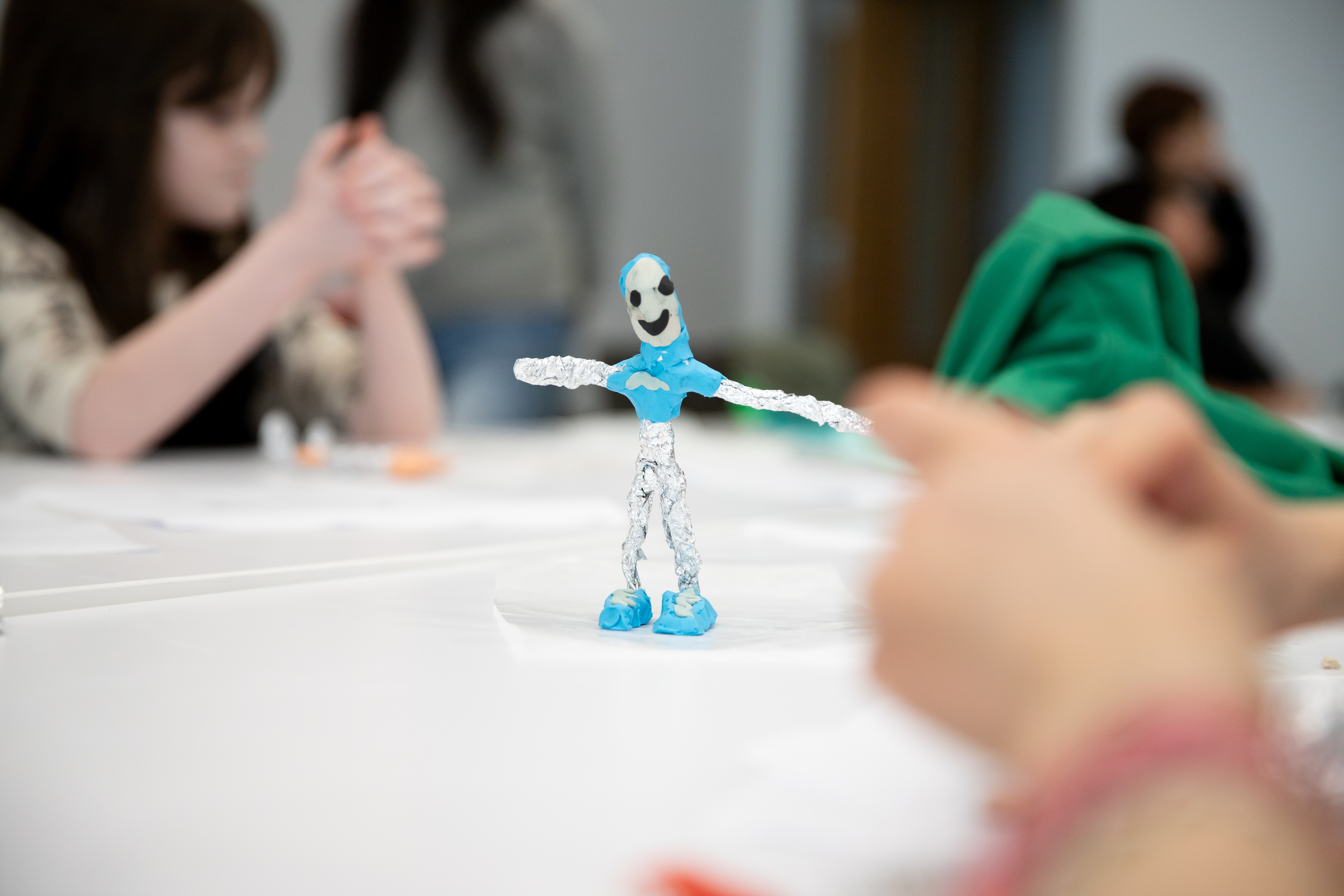
A puppet with foil and blue plasticine
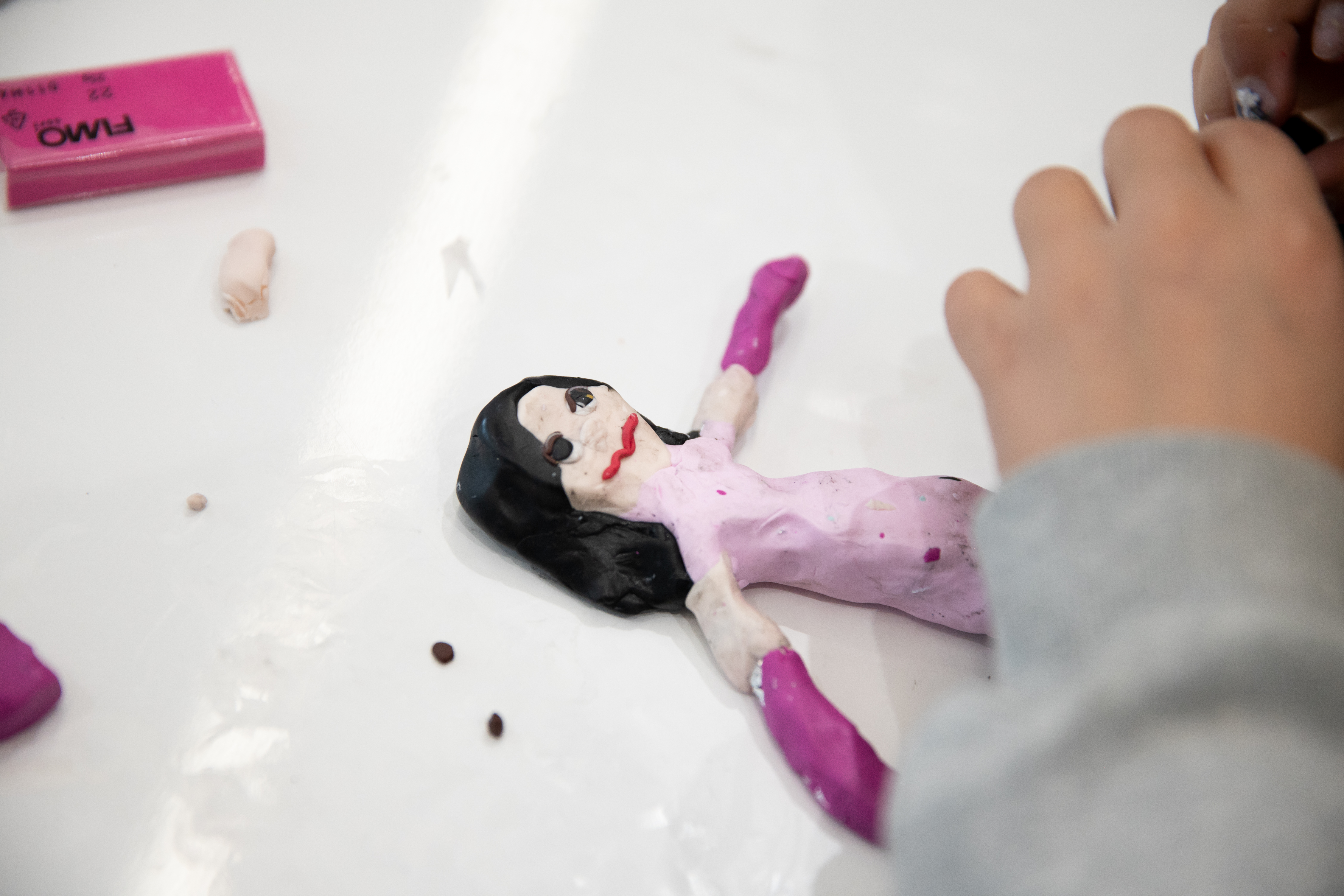
A student adds plasticine to their puppet
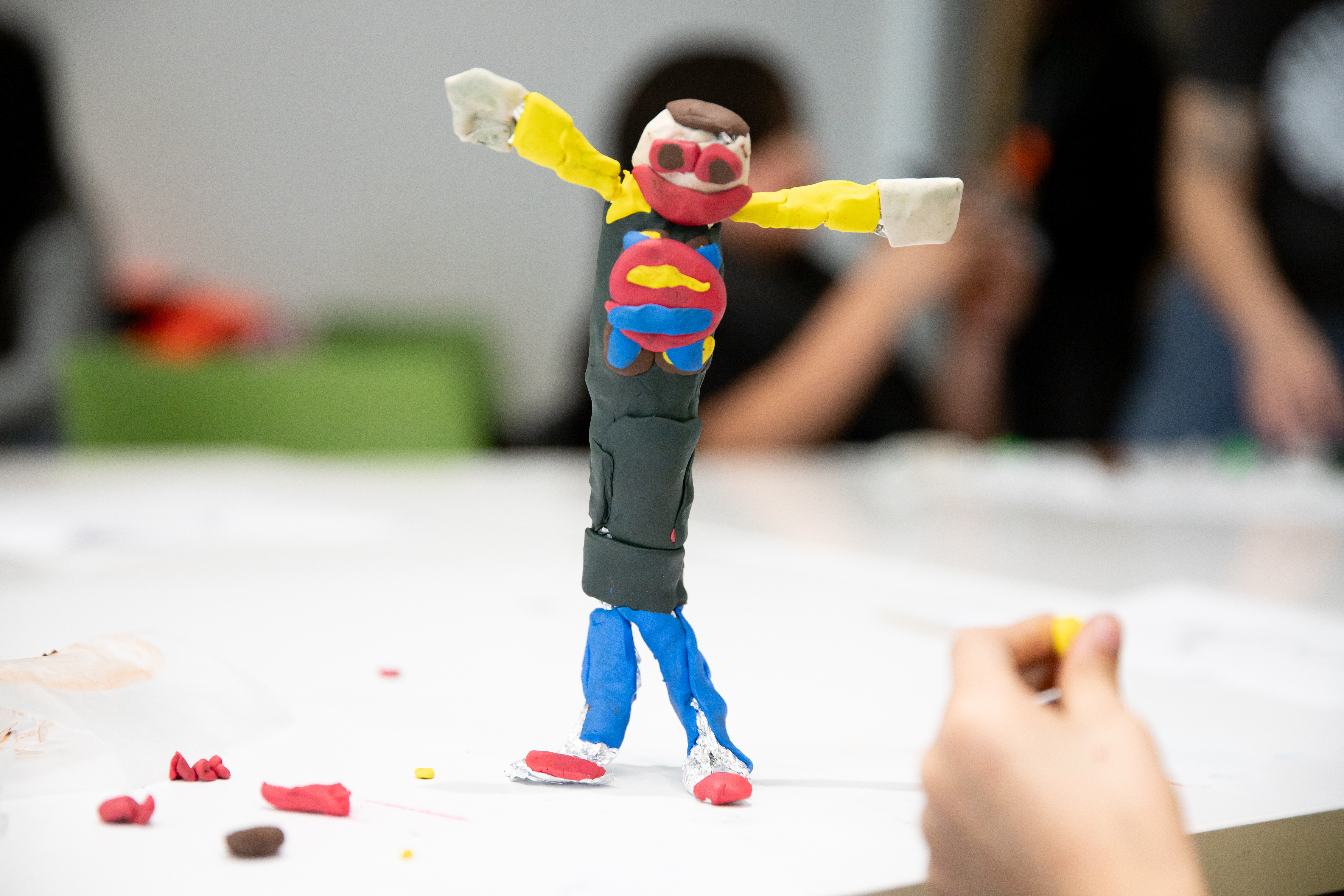
A cheerful puppet
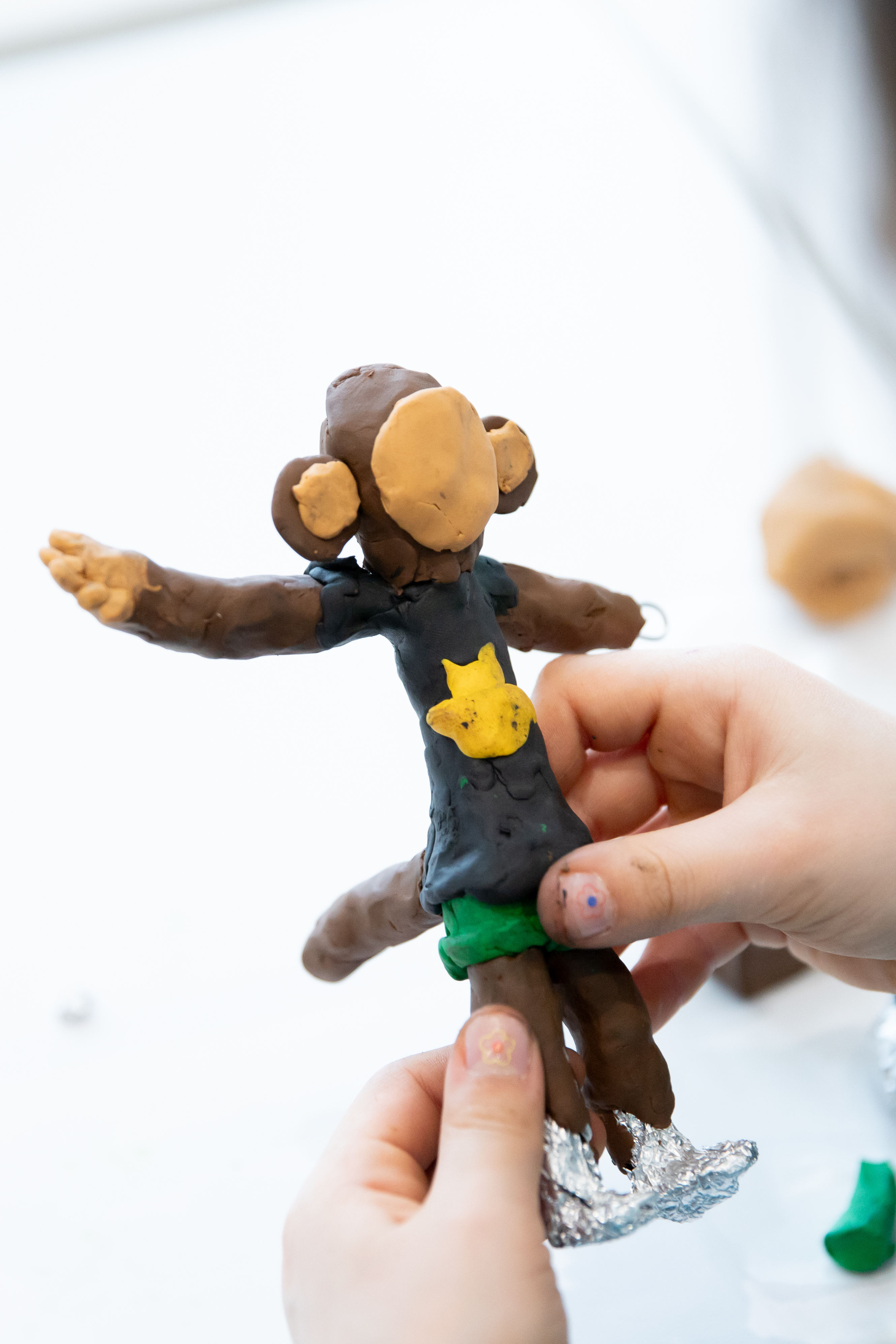
A monkey puppet
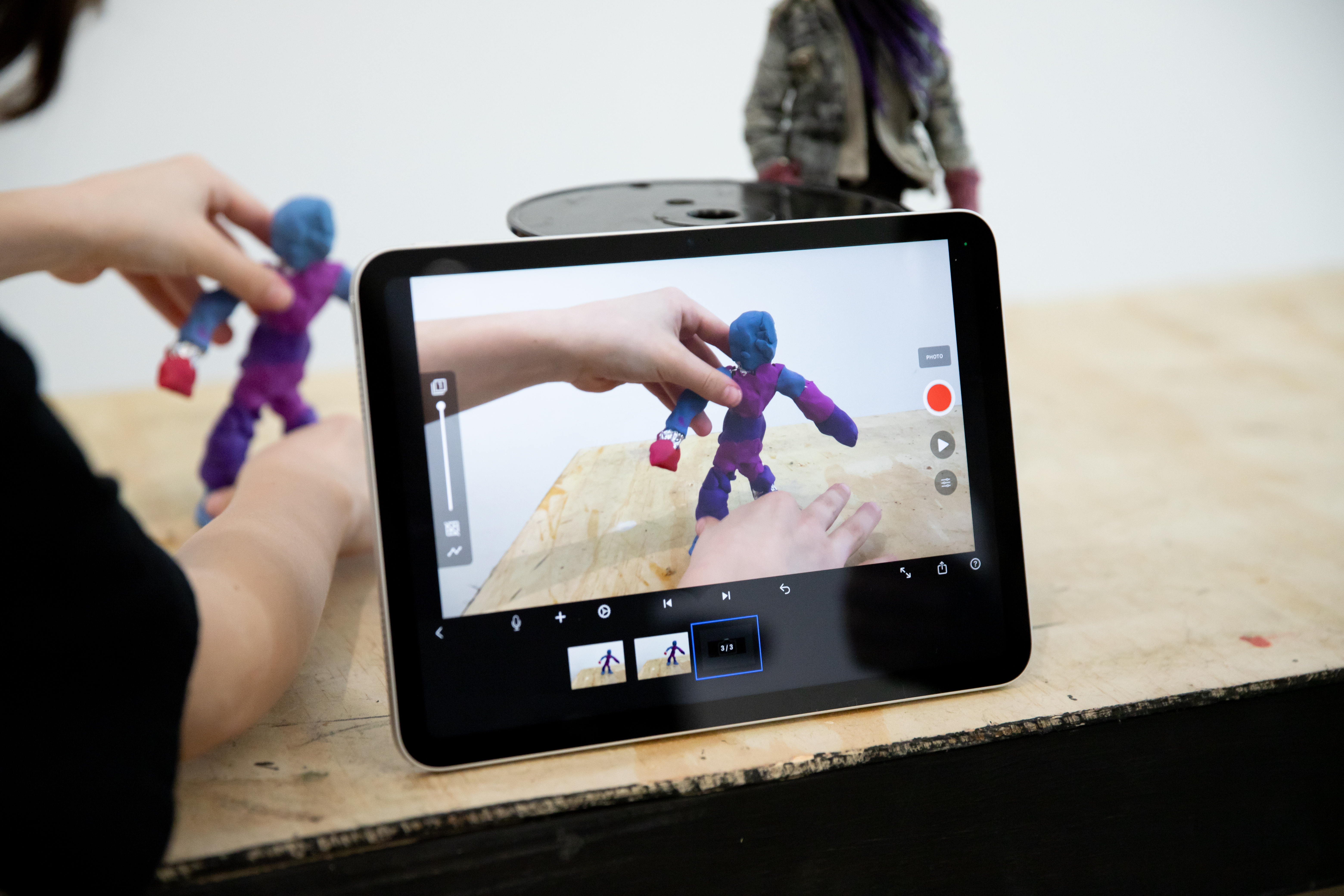
A student creates a stop-motion clip
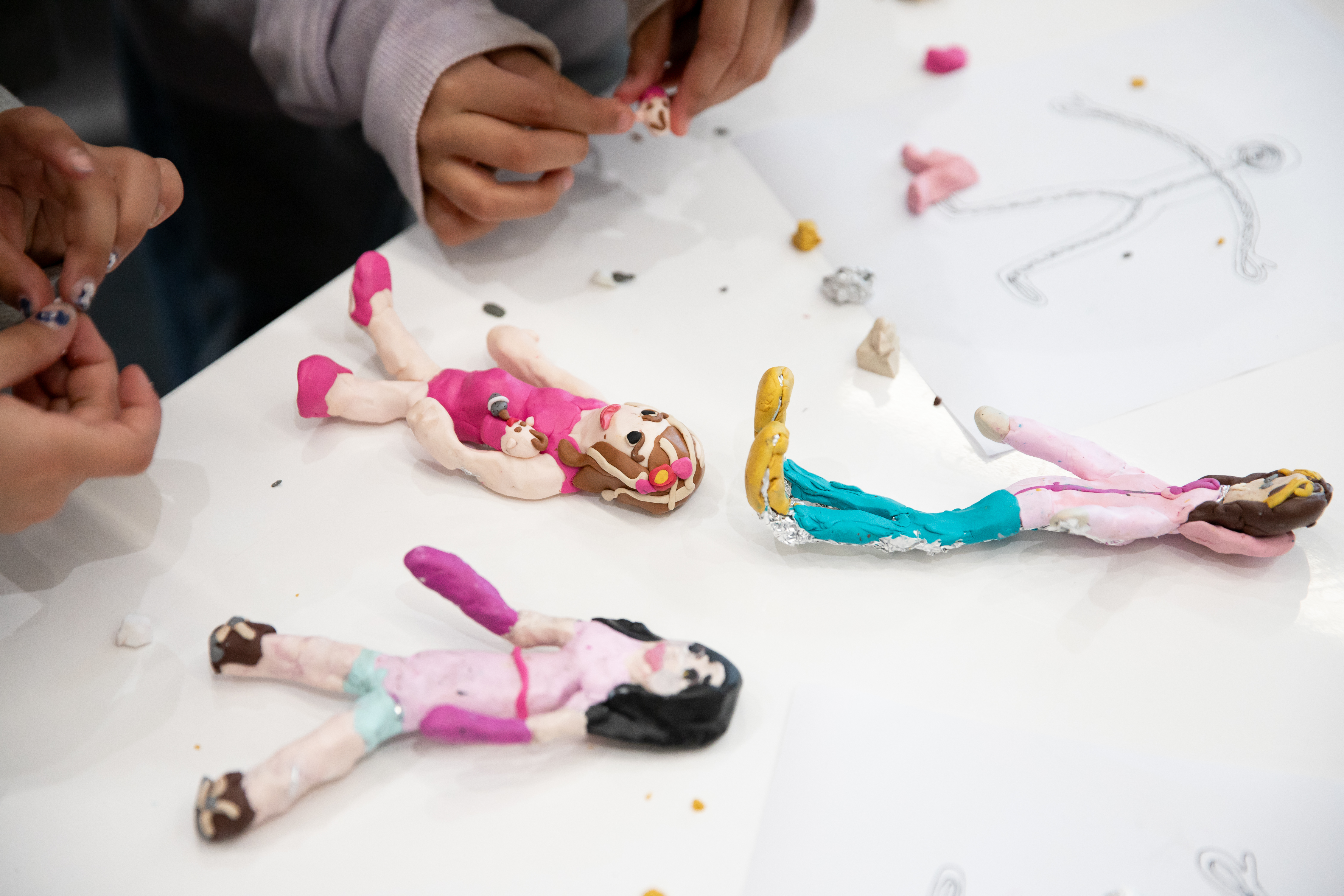
Students display their puppets

A student creates their stop-motion clips
Armature wires go flying and springing through the air as the young artisans from Queen Alexandra Elementary School pore over their stick-figure puppets and listen to instructions from director Amanda Strong.
At the L-shaped tables in Rennie Hall, students from Grades 3 and 4 were accompanied by parents, teachers and Principal Joe Maher, who also joined in, twisting wires and indulging their inner sense of play and creativity. Also present were animators Lia Fabre-Dimsdale (BMA 2023) and Danny Guay, who have worked with Amanda through her award-winning animation company, Spotted Fawn Productions.
The group was joined by Adriana Jaroszewicz, Assistant Dean of 2D + Experimental Animation and 3D Computer Animation. Adriana organized the event to connect ECU with the broader community and showcase artists like Amanda, an award-winning animator and filmmaker, to students.
"I often think back to my childhood and how people of colour were so poorly represented in the media. That’s why it’s important to me to show kids someone who looks like them," says Adriana, noting that over 40% of students at Queen Alexandra identify as Indigenous, making their tutelage under an award-winning Indigenous animation director like Amanda an opportunity for empowerment and representation. "Someone doing something significant for their culture and getting recognition for it. I want kids to have that example as they grow up.”
“I also wanted to extend the ECU community. It’s crucial to involve children early on, so when the time comes for them to decide about their future, they’ll have a positive memory of creative spaces and know ECU is a space where they belong.”
Surrounded by the chatter of energetic children, ECU students also began building their wiry figures and indulging their inner child. For Hikari Shinagawa, an ECU Foundation Student, the puppet-making workshop was a moment to let loose and learn from their younger counterparts.
“Some of the [elementary school] students created themselves as puppets, others made characters from shows they watched and some created original creatures!” says Hikari. “I was also surprised at how fast they were with their creations. They didn’t pause to think and plan what they wanted to create; they just went for it! I think that’s something I’ve kind of lost as I began studying art, and I want to be less afraid of just starting something I want to make.”
How a Puppet Is Made
Amanda, Lia and Danny guided the children through one of the most fun parts of puppet-making: constructing the body and picking out vibrant hues of plasticine.
Adriana’s daughter also participated in the workshop and created a puppet version of her friend sitting next to her Carefully choosing the right yellows to match her friend’s blonde curls, she, along with the other artists at the table, created cartoon characters, portraits of each other, and even many-limbed monsters.
As the students completed their projects, they gathered at the front to see Amanda’s eponymous puppet, Biidaaban. At only a few feet tall, the puppet captivated the students, who bombarded Danny and Amanda with questions: How was it made? (Silicone.) Do its glasses come off? (Nope.) Does the hoodie come off? (Nope.)
The Emotional Gamut of the Artistic Process
Stop-motion animation can be laborious as artists work frame by frame to painstakingly bring their puppets to life on film. Danny worried that teaching younger students could be challenging with so much patience and stamina required for even the simplest sequences.
“When Amanda told me about this workshop, I thought, ‘I’m so nervous at 50+ students to teach,’” he says. “But now that I’m here, they’re all having a good time and are enthusiastic.”
Hikari recalls such feelings clearly, seeing herself in the trials and tribulations of her younger peers.
“I remember scraping materials together from our kitchen to create characters and props when I was younger,” she says. “It was so nice to see the students try something new, ask for support when they couldn’t get it right, and celebrate by showing their finished work to their friends. These events can introduce a new passion and encourage young artists.”
When it finally came time to make the stop-motion clips, the students were rapt and giggling at watching their many creatures, characters, superheroes and even dinosaurs making micro-movements, taking pratfalls and walking into the camera lens.
As the event ended, students were thrilled to take home the puppets they’d worked so hard to create. Adriana hopes witnessing Amanda’s work and teachings will empower them on an artistic path.
"Events like these are about letting them express themselves and find their own voice,” she says. “When we encourage the younger generation to be themselves, take risks and not be afraid to fail, they feel empowered as they grow older. And the beauty of art is that they can keep doing for the rest of their lives.”
The puppet workshop was Adriana’s first outreach experience at ECU and was made possible through the ECU Decolonization & Indigenization Fund.
More about Animation at ECU
Emily Carr University offers two industry-leading animation programs: 2D + Experimental Animation and 3D Computer Animation.
Our 2D + Experimental Animation program explores both traditional and experimental animation techniques, while our 3D Animation program focuses on learning digital tools to create immersive worlds and characters. Both programs emphasize storytelling, technical skills and interdisciplinary collaboration to prepare students for careers in film, gaming and more.